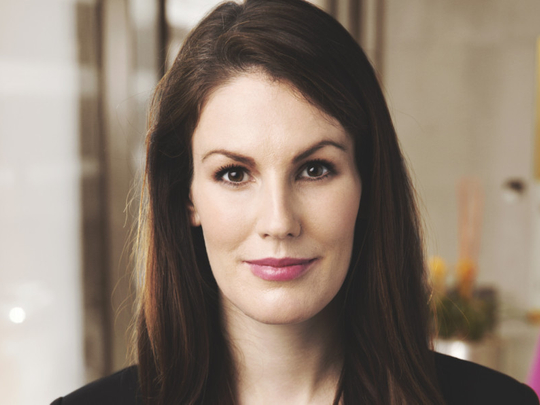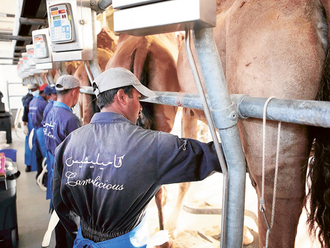
Swedish fashion company Hennes & Mauritz is focusing on its ethical profile to drive long-term sales growth as shoppers become more interested in how clothes are produced as well as their environmental impact, its new sustainability chief said.
The fashion industry has come under increasing pressure to cut water use and pesticides in cotton farming, reduce pollution from textile factories and improve factory conditions, particularly after the collapse of the Rana Plaza complex in Bangladesh two years ago.
Opinion is split on whether companies are doing enough.
While worker rights group Clean Clothes Campaign has accused H&M of using the sustainability issue as a marketing ploy, Corporate Knights magazine declared it to be among the world’s most sustainable companies.
Anna Gedda, H&M’s head of sustainability, is determined the latter view will prevail. Gedda, who reports directly to Chief Executive Karl-Johan Persson, said that H&M customers are demanding more transparency about the origin of the clothes they buy.
“We see it in the amount of queries we get by mail, in stores and in customer surveys. People are aware and want more information on social as well as environmental issues,” she told Reuters.
‘LIVING WAGE’
Several fashion groups, including H&M’s biggest rival Inditex, have ramped up their efforts on environmental and social issues in recent years. H&M, which was relatively quick to recognise the importance of ethical issues to consumers, has been among the more vocal.
H&M has pledged that workers at suppliers making about 60 per cent of its garments should be paid a “fair living wage” by 2018. It has also said that all its cotton will be sourced sustainably — grown or recycled — by 2020, up from the current 20 per cent.
“This is by and large a condition for future growth. What we invest now, we’ll get back later, in that we grow because we will stay relevant,” Gedda said, adding that the costs of improving standards will not be passed on to customers.
Clean Clothes Campaign’s Carin Leffler, however, called on H&M to quantify what it considers to be a “fair living wages” and voiced doubt over its ability to achieve the 2018 target.
“They lack credibility when they don’t back up words with action,” Leffler said.
Others are less sceptical. Corporate Knights magazine’s ranking of the world’s 100 most sustainable companies put H&M 75th. The only other fashion companies to make the grade were Britain’s Marks & Spencer at No 16 and Germany’s Adidas at No 3.
RISK FACTOR
Sustainability is increasingly in focus for investors, too; not only as a sales driver, but also as a risk factor, given the potential for output disruptions and water shortages.
Gedda said H&M hopes that improved wages and conditions at suppliers will translate into more stable production.
Output in Bangladesh and Cambodia, big sourcing markets for H&M, has been hit by protests by textile workers calling for better wages and conditions.
H&M has also faced criticism for not knowing the origin of most of the cotton it uses.
In 2013 it became one of the first big apparel retailers to publish its supplier list, but it still has a long way to go to gain control over the entire production chain. The next step, announced in March, is a plan to map and audit its second-tier suppliers, the fabric factories.
Full transparency is the vision, Gedda said, suggesting the possibility in future to trace every garment’s full history via its tag. A global survey by research firm Nielsen in 2014 indicated that 52 per cent of consumers check products’ labels for information on their social or environmental impact.
However, much will rely on improved recycling techniques as H&M, which increased sales by 18 per cent in 2014 and runs more than 3,600 stores, seeks to reduce dependence on natural resources.
“The great challenge here is how to increase the share of recycled fibres without it affecting quality,” she said.
___
H&M is ‘closing the loop’
To add to their sustainability cred, H&M is launching 10 new denim styles this September, for men, women and kids, that are all made using recycled cotton from textiles collected in its ongoing Garment Collecting initiative at selected stores. The collection will be available in all stores worldwide, as well as online.
“Creating a closed loop for textiles, in which unwanted clothes can be recycled into new ones, will not only minimise textile waste, but also significantly reduce the need for virgin resources as well as other impacts fashion has on our planet,“ says Karl-Johan Persson, CEO of H&M.
The new denim pieces, made from recycled cotton and organic cotton, include three styles of jeans for women: from skinny to distressed ‘girlfriend’ jeans, plus a denim jacket, flared dungarees and a denim jumpsuit. For men, there is a zip-up denim jacket, alongside two distressed slim leg styles, and a pair of joggers in coated denim. There are kids pieces too, including a zip-up hoodie with cute animal ears, along with stretch jeans sequined at the knee, or a street style hooded shirt, with distressed jeans.
The aim, says the company, is to reduce the environmental impact of the fashion industry, by limiting waste that goes to landfill and saving on natural resources used in the production of fabric.
Since 2013, H&M customers worldwide have been able to bring unwanted clothes from any brand into its stores as part of its Garment Collecting Initiative. So far, over 14,000 tonnes have been collected globally.
The company is currently able to use 20 per cent recycled cotton from collected clothes, and is investing in new technology to increase this share without losing quality. The target is to increase the percentage of recycled fabric to 300 per cent compared to 2014. — Staff Report













